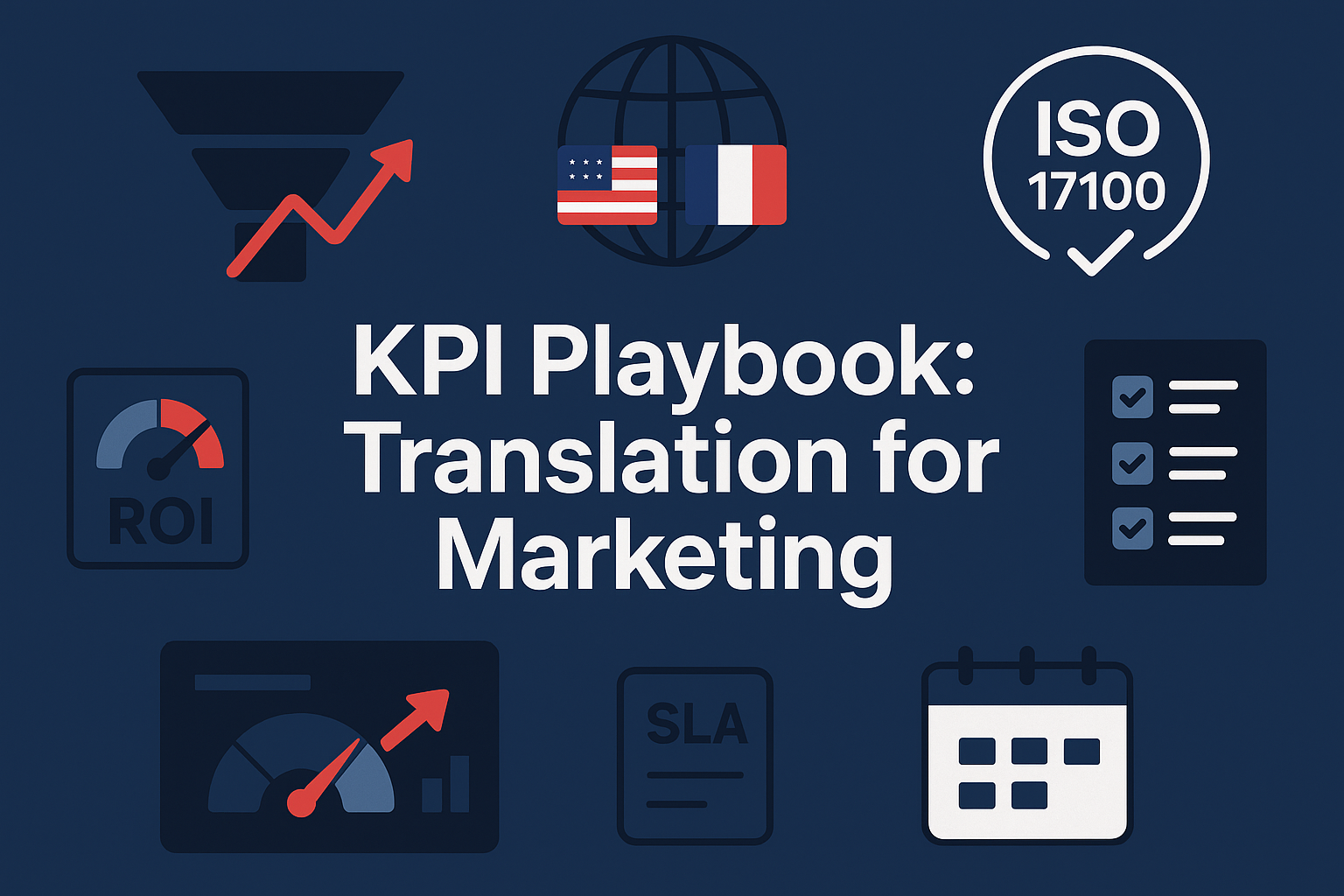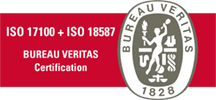The KPI Playbook for Marketing Leaders Buying Language Translation Services
Language translation services only create value when they move marketing KPIs. This guide shows CMOs how to benchmark, buy, and scale language translation services with measurable ROI.

Table of Contents
Why KPIs matter when buying language translation services
Marketing teams don’t buy words; they buy outcomes. Language translation services should be evaluated against growth KPIs you already track—lead volume, pipeline, CAC, and brand health. If your team publishes product pages, case studies, and ads in five markets, language translation services must shorten time-to-market and protect conversion rates across locales.
A practical first step is to centralize multilingual work in a services hub that covers all formats and industries. Use this to align expectations and scope before projects start—then trace results back to campaigns. For breadth, review M21Global’s translation services hub to understand how different deliverables map to objectives. For deep specializations, match your funnel assets to the right expertise—e.g., technical translation for datasheets or legal translation for terms and warranties.
Build a shared vocabulary for language translation services KPIs
Create a glossary of the exact KPIs you’ll use to judge language translation services: Launch TAT (time from brief to publish), Linguistic QA score, Review cycle count, On-brand terminology rate, and Post-publish conversion delta. Tie each definition to the content type and market. For example, a Portuguese campaign might rely on English to Portuguese translation, while a UK launch requires Portuguese to English translations. This alignment prevents disputes later and keeps language translation services accountable to marketing outcomes.
Define the KPI stack for global marketing
Use a layered KPI stack so language translation services connect directly to growth:
- Speed to market: Brief-to-publish TAT per asset type and locale.
- Quality: Linguistic QA score, error severity mix, and ISO-aligned corrective actions.
- Brand & consistency: Terminology adherence, glossary coverage, and reviewer agreement.
- Engagement & conversion: CTR, time on page, demo/quote conversion deltas per locale.
- Cost efficiency: Cost per 1,000 target-language words, review rework rate, and vendor utilization.
When regulated deliverables are required, add KPIs specific to certified translations and industry content like financial translation or business translation. The goal is simple: language translation services should improve market coverage without sacrificing performance.
Set baselines, targets, and SLAs that protect brand and pipeline
Before changing vendors, capture baselines: median TAT by asset type, current QA score, and conversion rate per locale. Then set targets with realistic stretch. A common pattern is a 20–30% TAT reduction after two cycles and a QA score ≥98/100 with zero critical errors.
Convert targets into SLAs. For example, legal pages require a second-linguist review and a compliance sign-off—link this to a higher SLA tier. Products with technical safety implications should route through a documented, auditable workflow; your vendor should demonstrate how their process meets ISO standards and why it matters for marketing outcomes. If you publish in Spanish, ensure language translation services include locale-specific review to avoid regional misfires.
Include publishing readiness in your SLAs: terminologies approved, UTM tracking in place, and final formatting. Close the loop with a standing CTA workflow—pointing high-intent pages to request a quote accelerates capture once localized content goes live.
Instrument your funnel: data, QA, and ISO-backed process
Dashboards should combine linguistic QA with marketing analytics. Use GA4 events for publish timestamps and conversion goals, and tag each localized asset with market and vendor IDs. For terminology and reviewer agreement, use structured QA forms and track error severities over time.
Back the process with recognized standards. ISO 17100 defines the core requirements for translation services, including qualified translators and revision by a second linguist; ISO 18587 covers post-editing of machine translation. Ask vendors how their workflows map to these standards and how non-conformities trigger corrective actions. For reference, see ISO’s overview of ISO 17100 and Google Analytics 4 event measurement to wire metrics to outcomes. M21Global documents its approach to ISO 17100 certification and ISO 18587 certification; use these as checkpoints when defining KPIs for language translation services.
Budget, ROI, and total cost of quality
ROI is not just price per word. The total cost of quality includes rework, delays, and the opportunity cost of late launches. If your team pushes a product update monthly, shaving two days off localization increases revenue recognition and reduces campaign thrash. Language translation services should therefore be modeled across: base production, review, terminology management, and change requests.
Use a lightweight business case: estimate pipeline impact from earlier launches plus conversion lift from native-language pages. For high-stakes assets or public filings, bring in legal translation and ensure reviewers sign off. When demand spikes, the right language translation services scale capacity without sacrificing QA, so your team can publish on time and on brand.
Governance, vendor scorecards, and continuous improvement
Create a monthly scorecard for language translation services: SLA adherence, QA trends, terminology coverage, and conversion deltas by locale. Share it with your vendor and internal stakeholders. Celebrate improvements and open corrective actions when thresholds slip.
Establish a continuous improvement cadence. Keep a living terminology base, integrate reviewer feedback, and document root-cause fixes. See how M21Global handles continuous improvement and their quality control and rigorous review. Finally, socialize proof points—link to client testimonials and make it simple for prospects to request a quote. Done right, language translation services become a repeatable growth lever, not a cost center.
FAQ
Q1. Which KPIs should a CMO prioritize when evaluating language translation services?
Start with the KPIs that already drive your operating plan: time-to-market, QA score, and conversion rate by locale. Time-to-market matters because campaigns lose momentum when translations lag behind product updates. A robust vendor will commit to service levels for briefs, revisions, and final delivery, and show capacity planning for peak periods. QA should be measured with a severity-weighted rubric and target a near-perfect score for public pages; for regulated content, add a second-linguist review and a sign-off trail.
The final KPI is impact: the conversion delta for localized pages versus source language. Track this by tagging assets in your analytics stack and comparing pre- and post-publish performance. By reporting on these three areas, language translation services can be compared fairly and optimized over time.
Q2. How do ISO standards improve the quality of language translation services?
ISO 17100 sets minimum requirements for translators’ qualifications, project workflows, and mandatory revision by a second professional. This reduces critical errors and speeds approvals because reviewers trust the process. ISO 18587 adds guidance for machine translation post-editing, ensuring productivity gains don’t erode quality.
For marketing teams, standards provide a shared framework for SLAs and audits. Vendors that align to ISO can show how they prevent defects, handle corrective actions, and document changes. The result is fewer rework loops, faster launches, and more consistent brand voice—exactly what marketing leaders need from language translation services.
Q3. What’s the best way to estimate ROI on language translation services?
Model ROI along two axes: acceleration and conversion. Acceleration is the revenue unlocked by launching localized assets sooner—multiply the daily run-rate of a campaign by the days saved. Conversion is the lift from publishing in the customer’s language; apply a conservative uplift to your current conversion rate per market.
Subtract the total cost of quality—production, review, QA, terminology maintenance, and change requests. When you present ROI this way, language translation services can compete with other growth investments on equal footing, and finance teams can validate the logic behind the numbers.
Q4. How should we scale language translation services across new markets without losing control?
Standardize the intake (brief templates, reference assets, glossaries) and the output (style guides, QA forms). Automate handoffs with a simple project queue and require market reviewers to log acceptance criteria. Keep a vendor scorecard visible to stakeholders so issues surface early.
When entering a new language pair, start with high-impact assets and a tighter SLA tier. Use pilot metrics—TAT, QA score, and conversion delta—to unlock broader scope. With disciplined governance, language translation services scale smoothly while protecting brand and pipeline.
Links
- Internal:
- Translation services,
- Technical translation,
- Legal translation,
- Certified translations,
- Financial translation,
- Business translation,
- English to Portuguese translation,
- Portuguese to English translations,
- ISO 17100 certification,
- ISO 18587 certification,
- Quality control,
- Rigorous review,
- Client testimonials,
- Request a quote
- External:

